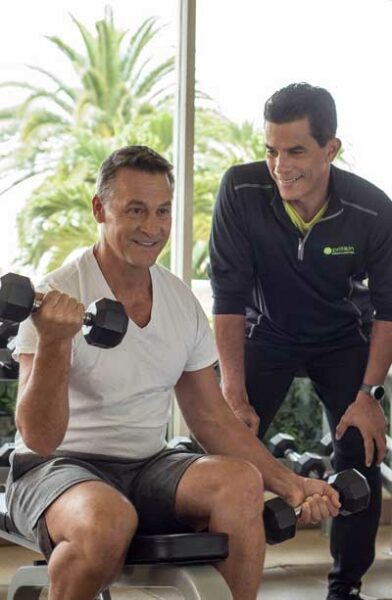I Hate Exercise!

Across the park you notice someone, about your age, out for a jog. You cringe and say to yourself, “I hate exercise!” You probably know exercise is good for you. Exercise is linked to prevention of type 2 diabetes, cardiovascular disease, obesity, hypertension, osteoporosis and depression. But, you find it hard to make it part of your lifestyle. You’re not alone. Most Americans do not exercise enough because they find it painful, hard to fit it into their busy lifestyles or simply don’t enjoy it. Let’s transform your relationship with exercise and have you jumping for joy (…play on words intentional).
Motivation for People Who Hate Exercise
1. Fun Exercise
That jogger in the park may have been grinning. They may run because it brings them joy. Joy can be a strong motivator. What brings you joy? Is there joy for you in the feeling of the wind in your face as you stroll along the trails or taking the dog for a walk where things are lush and green? Perhaps, your inner child still loves how your body feels as it swims through water or the exhilarating feeling when your bike accelerates as you cycle down a hill? You’ll be more likely to stick with a physical activity if it brings you joy. (Maybe start by not calling being active ‘exercise’ if you have a deeply rooted hate for it.) What brings you joy? Think about how do you like to play or have fun. Then, go find the joy that makes you want to kick up your heels.

2. Set realistic goals
Toss out the scale and break the mirrors (okay, not literally). By giving up on what you look like and focusing on what you want to feel like, you will find greater success and enjoyment from exercise. At the University of Alberta, 273 sedentary adults participated in a study that involved 3 one-hour exercise sessions per week. Even after a year of exercising, for some working out still hadn’t formed into a habit. Surprisingly they quit despite noting positive outcomes, such as having more energy, improved sleep and less stress. They quit largely because they found it hard to fit the exercise into their busy lives and were disillusioned about the results they wanted to see. Your motivation to exercise can quickly dwindle if you are disappointed about not meeting preconceived unrealistic expectations for weight loss or changes in your appearance.
Setting realistic goals with progressive benchmarks can allow you to frequently feel successful and keep you motivated. For example, let your goal be based on how many times per week you exercise, instead of how you look. Being focused on a big picture outcome, such as dropping 10 pounds, will simply leave you frustrated.
3. Find what moves you
Ever stopped to consider that the jogger in the park may also have thought, “I hate exercise”? Perhaps they are jogging because they are motivated by pride. There can be pride in knowing jogging can improve the health of your heart muscle or help you be able to keep up with your kids in a game of tag. For some people pride is very motivating. Would knowing that resistance training helps keep your bones strong make you feel proud every time you lift the weight? Motivation can come from different sources. Whether it’s joy, pride or realistic goals you have set, find what motivates you to move.
4. Know How to Start
Just start – don’t let perfection be an enemy and start doing something. Try 10 pushups or go outside for a 15 minute brisk walk. Go on – you’ll be a better version of you. Embracing the idea of doing a little bit, then building on that success, will motivate you to keep going. “Moderate, progressive goals are how you reach your target – that’s how habits are formed and lifestyle habits are made,” says Jamie Costello, Director of Fitness at the Pritikin Center.
5. Exercise without pain
Before you jump into something, be sure to remember your body can have limits. Know your range of motion, flexibility and strength. Trying to lift a 40lb weight, nor trying to do the splits may not be the best place for you to start. Keeping this in mind will help avoid injury. Here is more on how to exercise without pain or how to exercise with knee pain from the experts at the Pritikin Center.
Individualized exercise support
“At Pritkin, we dial into detailed individual needs,” explains Costello. We’re all different and so are our exercise needs. “Once you know your activity level, you can set your first goal for improvement. Keep it small – such as adding 500 steps per day, then slowly build up once you’re successful,” suggests Costello. During a stay at the beautiful Pritikin Center in Miami, Florida, the team of experts help design an effective exercise plan just for you.
Pritikin Longevity Center
Are you ready to get moving? Find your joy or motivation, set realistic goals and get started! It’s worth it – exercise reduces stress, decreases depression, improves concentration and may boost confidence.
Get a Brochure & Rates
Sources
- High-quality carbohydrates and physical performance. Nutr Today 2018 Jan;53(1):35-39.
- Exercise motivation: a cross-sectional analysis. Int J Behav Nutr Phys Act 2010;7:7.
- Study highlights fragility of motivation for regular exercise.